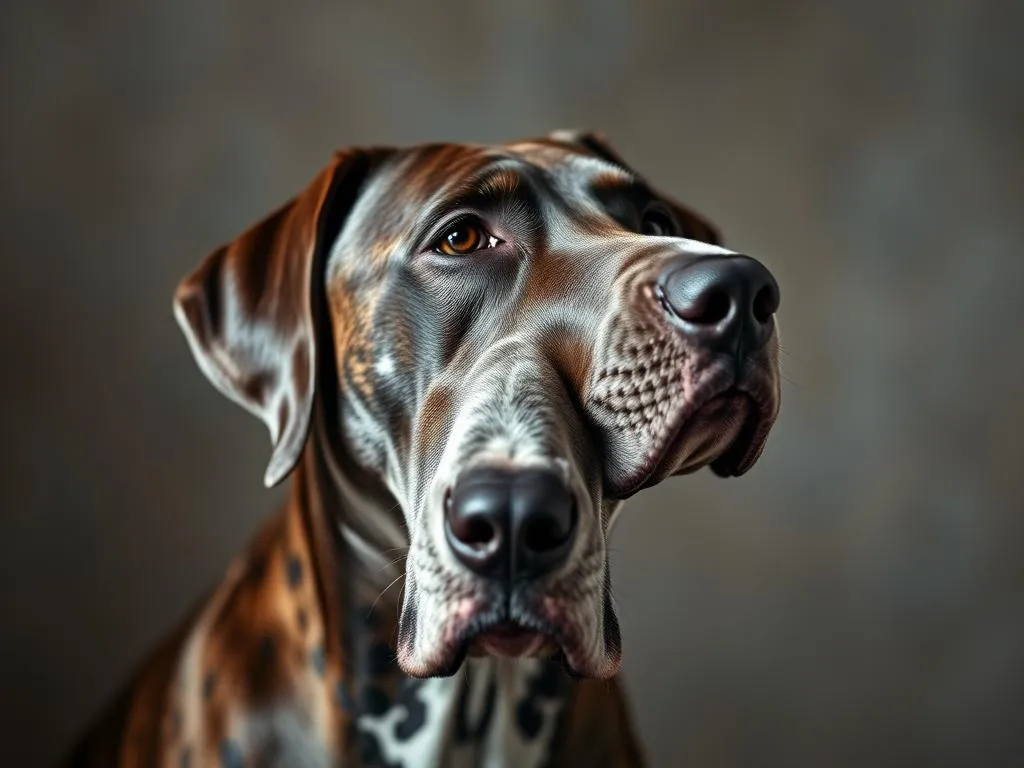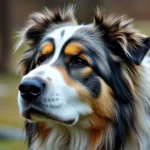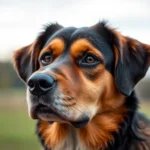
Introduction
The Great Dane is often referred to as the “gentle giant” of the dog world. Originating in Germany, this breed has a rich history dating back to ancient times when they were used for hunting large game. Not only are they known for their impressive size—often standing over 30 inches tall at the shoulder—but they also showcase a variety of colors, including fawn, brindle, blue, black, and harlequin.
As a dog owner or prospective owner, one of the most pressing questions might be: will Great Dane be good with another dog? This article aims to address that question while emphasizing the importance of understanding dog behavior and socialization.
Understanding Great Danes
Temperament and Personality
Great Danes are known for their friendly and gentle nature. They are often affectionate, loyal, and eager to please their owners. Despite their massive size, they tend to be quite sociable and enjoy being around people and other animals.
However, they do possess protective instincts, which can sometimes lead to overprotectiveness, especially if they sense a threat to their family. Their social behaviors are crucial in determining how well they will get along with other dogs, as their temperament can sometimes vary based on their upbringing and socialization experiences.
Size and Space Considerations
The impact of size on interactions with other dogs cannot be understated. A Great Dane’s sheer size can intimidate smaller dogs, even if the Great Dane is friendly. Additionally, they require a significant amount of space to move comfortably, which can affect their interactions with other breeds.
When considering whether a Great Dane will be good with another dog, it’s important to factor in the size differences, as well as the living environment you can provide.
Socialization of Great Danes
Importance of Early Socialization
Early socialization is crucial for Great Danes. Exposing them to different dogs and environments at a young age can help them develop into well-rounded adults who are comfortable with various situations and other pets. Ideally, this exposure should begin between 3 and 14 weeks of age, a critical period for social learning.
Techniques for Socializing Great Danes
There are effective techniques to help socialize your Great Dane:
- Positive Reinforcement Training: Use treats and praise to reward good behavior during interactions with other dogs.
- Gradual Introductions: Start with brief meetings and gradually increase the duration and intensity of interactions as both dogs become comfortable.
- Playdates and Dog Parks: Arrange playdates with known friendly dogs or visit dog parks to give your Great Dane opportunities to socialize in a controlled environment.
Compatibility with Other Dog Breeds
General Compatibility Factors
Understanding the general compatibility factors is essential in answering the question, will Great Dane be good with another dog. These factors include:
- Size Differences and Play Styles: Larger dogs may unintentionally play too rough with smaller breeds, leading to injuries.
- Energy Levels and Activity Needs: A Great Dane typically has moderate energy levels, so pairing them with highly energetic breeds may lead to frustration.
- Temperament Matching: Dogs with similar temperaments often get along better. A calm Great Dane may not mesh well with an overly excitable dog.
Best Dog Breeds for Great Danes
Some breeds generally get along well with Great Danes, including:
- Labrador Retrievers: Friendly and sociable, they often match well with the gentle nature of Great Danes.
- Golden Retrievers: Known for their friendly demeanor, they can complement a Great Dane’s personality.
- Boxers: Their playful nature can keep up with a Great Dane without being overly aggressive.
These breeds typically have compatible temperaments and energy levels, making them ideal companions for a Great Dane.
Breeds to Avoid
Conversely, some breeds might not be suitable companions for a Great Dane. These include:
- Small Breeds (e.g., Chihuahuas, Pomeranians): Their small size can make them vulnerable during play.
- Aggressive Breeds (e.g., Pit Bulls, Rottweilers): They may provoke a defensive response from a Great Dane.
Understanding these dynamics is crucial for ensuring a harmonious multi-dog household.
Signs of Good and Bad Interactions
Positive Signs of Compatibility
When introducing a Great Dane to another dog, look for positive signs of compatibility, such as:
- Playful Behavior and Body Language: Wagging tails, relaxed postures, and playful bowing are good indicators.
- Mutual Respect and Calm Demeanor: Both dogs should exhibit calm behavior, taking turns in play and respecting each other’s space.
Warning Signs of Conflict
It’s equally important to recognize warning signs that may indicate potential conflicts:
- Aggressive Posturing: Growling, barking, or raised hackles can signify discomfort or aggression.
- Signs of Stress: Tail tucking, withdrawal, or excessive panting are indicators that either dog may be feeling anxious.
Monitoring these behaviors can help prevent conflicts before they escalate.
Tips for Introducing a Great Dane to Another Dog
Preparing for the Introduction
Before introducing your Great Dane to another dog, preparation is key:
- Choosing a Neutral Location: A neutral area, like a park, can reduce territorial instincts.
- Using Leashes and Muzzles if Necessary: For safety, especially in the initial stages, consider using leashes or muzzles.
The Introduction Process
Follow these steps for a smooth introduction:
- Initial Meeting: Allow both dogs to see each other from a distance before gradually closing the gap.
- Leashed Interaction: Keep the dogs on leashes but allow them to approach each other calmly.
- Observe Reactions: Watch for any signs of aggression or stress, and be ready to intervene if necessary.
Post-Introduction Care
After the introduction, continue to monitor their interactions in the following days:
- Reinforcing Positive Behavior: Reward both dogs for calm and friendly interactions to encourage good behavior.
- Gradual Increase of Interaction Time: Slowly increase the time they spend together while observing their comfort levels.
Potential Challenges
Jealousy and Rivalry
Jealousy and rivalry can arise when bringing another dog into your home. It’s essential to give each dog individual attention and ensure they don’t feel neglected.
Strategies to Mitigate Jealousy:
– Schedule separate playtimes.
– Offer treats and praise to both dogs equally during interactions.
Health Considerations
Great Danes are prone to certain health issues due to their size, including hip dysplasia and bloat. Regular vet check-ups are essential to monitor their health and catch any potential issues early on.
Conclusion
In conclusion, understanding whether a Great Dane will be good with another dog involves considering their temperament, the importance of socialization, and the compatibility with other breeds. Great Danes can be wonderful companions to other dogs under the right circumstances and with careful introductions.
As responsible dog owners, it’s crucial to assess your individual dog’s behavior and personality before introducing them to another dog. By following best practices in socialization and monitoring their interactions, you can foster a harmonious environment for your beloved Great Dane and their new canine friend.
FAQs
Can Great Danes live with small dogs?
Great Danes can live with small dogs, but careful supervision and introductions are necessary to ensure the safety of the smaller breed.
How can I tell if my Great Dane is ready for a companion?
Signs that your Great Dane may be ready for a companion include a calm demeanor, interest in other dogs, and a desire for social interaction.
What should I do if my Great Dane doesn’t get along with another dog?
If your Great Dane doesn’t get along with another dog, it’s important to reassess the situation, consider training, and possibly consult with a professional dog trainer.
Are Great Danes good family dogs with other pets?
Yes, Great Danes are often excellent family dogs and can get along well with other pets when properly socialized and introduced.









